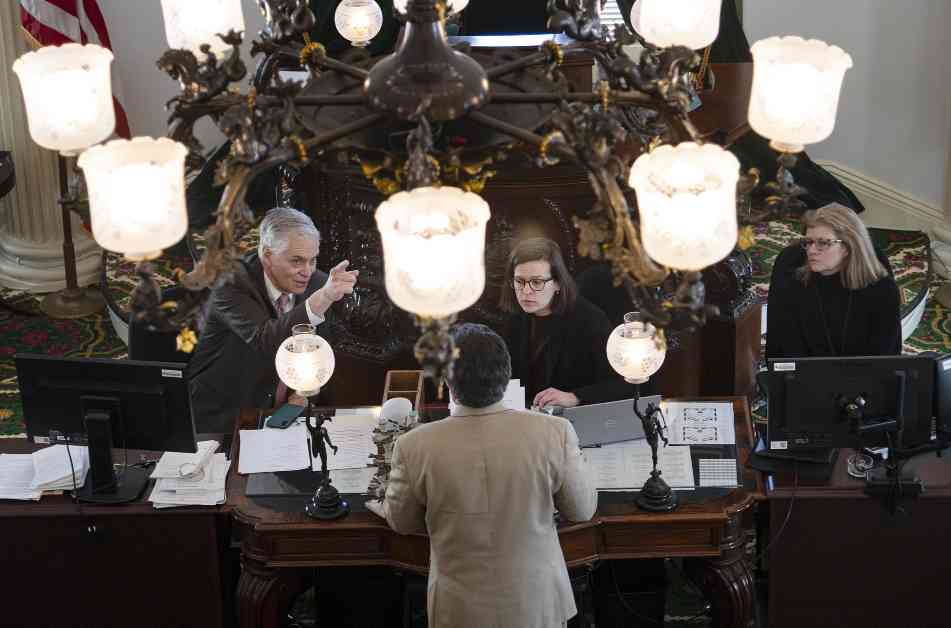The Statehouse in Montpelier is more than just a building—it’s a hub of legislative activity, political intrigue, and communal appreciation. On a seemingly ordinary Friday, the inner workings of this historic site were brought to light, shedding insight on the financial underpinnings that keep the gears of governance turning. As Senate staff members assisted Senator Brian Collamore in navigating the labyrinthine corridors, the question lingered in the air: What is the true cost of legislative business?
Behind the scenes, the Joint Fiscal Office revealed a staggering figure—a recommendation of nearly $25 million for the upcoming fiscal year, reflecting a significant 9% increase from the previous year’s budget. This allocation encompasses a myriad of essential expenses, from compensating legislators to maintaining crucial support offices like Legislative Operations and Human Resources. Scott Moore, the financial maestro behind the scenes, detailed the reasons behind this budget surge, citing salary raises for legislators and mounting healthcare costs as key factors.
One can’t help but marvel at the intricate web of finances that sustain the Statehouse’s operations, woven together by dedicated individuals like Catherine Benham and Agatha Kessler. As the House Appropriations Committee convened to discuss the proposed budget, a moment of camaraderie and appreciation unfolded, encapsulating the spirit of unity and collaboration that underpins legislative endeavors. Amidst the routine proceedings, a touch of humor and warmth surfaced, with Rep. Robin Scheu expressing gratitude for the unsung heroes who make the legislative process possible.
In a parallel realm of legal complexities and political maneuvers, the Vermont Supreme Court delivered a decisive ruling on a contentious suit involving Gov. Phil Scott’s appointment of Zoie Saunders as interim education secretary. The court’s dismissal of the suit marked the culmination of a protracted legal battle, underscoring the delicate balance of power and the nuanced interplay between branches of government. Chief Justice Paul Reiber’s poignant reflections on the principles of restraint and constitutional governance resonated deeply, emphasizing the sanctity of democratic norms and institutional integrity.
Meanwhile, in a poignant tale of bureaucratic upheaval and personal loss, the abrupt termination of Richard Amore from his role at the U.S. Department of Agriculture sent shockwaves through Vermont’s rural development landscape. Against the backdrop of broader federal workforce disruptions and policy shifts, Amore’s poignant words underscored the human toll of administrative decisions on livelihoods and communities. As thousands of probationary employees faced uncertain futures and funding streams dried up, the reverberations of White House actions echoed across the state, leaving a trail of uncertainty and hardship in their wake.
Amidst the tumultuous currents of political change and institutional dynamics, a whimsical touch of romance and mystery graced the Statehouse on Valentine’s Day. The elusive “Valentine’s Day Phantom” once again manifested, adorning the stately columns with a vibrant display of hearts, spreading cheer and warmth in the frosty February air. As the day drew to a close, a sense of unity and shared humanity pervaded the halls of power, transcending partisan divides and bureaucratic formalities.
In the heart of Montpelier, where history converges with modernity, and tradition dances with innovation, the Statehouse stands as a testament to the enduring spirit of democracy and civic engagement. Behind its imposing facade lies a world of intricate deliberations, profound decisions, and human stories that illuminate the tapestry of governance in all its complexity. As the sun sets on another day of legislative business, one thing remains clear—the true cost of democracy is immeasurable, yet its value is priceless.









